“Communications is at the heart of eCommerce and community.” – Meg Whitman
When it comes to eCommerce marketing, do you feel as though you’re continuously taking one step forward – only to take two steps backwards to get your customer’s attention?
We feel you. According to a recent report, Commerce Next and Oracle Customer Experience Cloud, here’s a snapshot of the biggest challenges retailers face:
You’ll be surprised to know that all these problems can be addressed by getting on the “omnichannel bandwagon.”
Before we jump into the how, let’s first understand what omnichannel marketing entails and how it can transform into eCommerce success?
Omnichannel marketing goes well-and-beyond being a mere tactic. It involves a 360 degree, fully-integrated approach for offering customers a seamless and consistent experience, both online as well as offline.
To put it simply, it comprises a plethora of customer interaction points, channels, and marketing opportunities to inch closer to the customer’s mind. These include (but are not limited to): eCommerce marketplaces, mobile websites and applications, social media platforms, retargeting and sales, SMS messaging, online live chat, customized email marketing, the works:
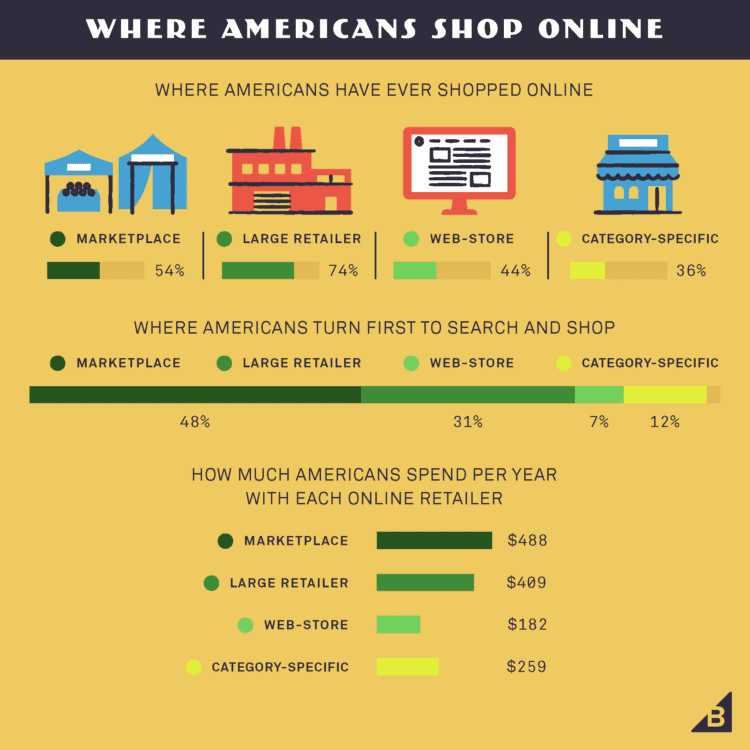
Top-6 eCommerce Strategies for Channeling your Omnichannel Power
1. Get a Grip on Your Customer’s Journey & the Way They Shop
In the bathroom (versus in the physical store). On the couch at 2 am (versus from the store racks). At work on a bored Tuesday afternoon (versus going for the weekly Sunday shopping ritual).
This is how customers are shopping today.
From a numbers point-of-view:
- A staggering 81% of retail shoppers conduct online research before buying. (GE Capital Retail Bank)
- 57% of consumers opt to shop online, whereas 31% prefer visiting the physical shop. (Bizfeel)
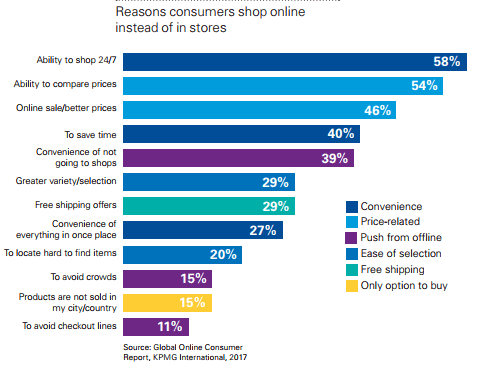
- According to the same source, about one-third of the consumers claim that the ability to shop online offers the following advantages: 24/7 (32%), lower prices (29%), greater convenience (22%), and saved time (17%).
All these advances can be attributed to the rising adoption of smartphones and tablets. In fact, Statista predicts that the number of smartphone users will reach 3.8 billion by 2021.
So logically, the next step is to gather enough information about buyer behavior and shopping patterns. Start by asking yourself these questions to create a rock-solid omnichannel strategy:
Q1. What are the important online and offline touchpoints my customers use?
Q2. How can I establish my brand’s presence across these touchpoints?
Q3. Finally, what can I do to make these touchpoints “shoppable?”
Handy tip: As a marketer, you may think customers view buying as a “platform-driven” behavior, but the reality is anything so. A buyer does not opt to shop on a website because it is a ‘website;’ they do so because it is convenient. It helps to think about the benefit the user will be leveraging when chalking out an integrated omnichannel strategy.
“It takes 6-8 touches to generate a viable sales lead.” – Salesforce Report
2. Automation Can Be Your Best Bet YET!
Let’s face it: Everyone wants more bang for their buck. In eCommerce lingo, this translates to embracing automated solutions that are convenient, affordable, and results-oriented. Take, for example, Acquire’s live chat feature which allows you to meet the customer service, sales, and support needs of your business — on any device:

In addition to this, there are multiple innovative automated tools that eCommerce brands are embracing today:
- Timberland’s genius “TouchWalls” strategy that makes use of near-field communication technology:

Basically, shoppers use large interfaces and iPads to view products and build their personalized shopping lists. That’s not all. All the data is then stored in the user’s profile for a more targeted marketing and customer experience.
- Similarly, Nike’s Munich-based store houses a “Community Wall” that allows you to connect to a community of fellow sports enthusiasts:

“You are engaging with the consumer on an intimate level — they are telling you what products are interesting. That customer data is one of the most important things to grow your brand.” Kate Kibler, Timberland’s VP of direct-to-consumer.
Key insight: “Digitally-native” brands are going the bold, personalized route to connect with users on a more intimate and personal level.
The Writing is on the Wall
“The global omnichannel retail commerce platform market is expected to grow to $11.1 billion by 2023.” – Market Research Future
Most people view omnichannel marketing as just another marketing gimmick – a big mistake. It has emerged as the single-largest differentiator for brands and helps the latter enjoy a 30% higher lifetime customer value. And why not? You can’t really put a price on the any time, anywhere philosophy – the central idea that drives omnichannel marketing. Key channels that empower an omnichannel experience can be summed up in the following image:
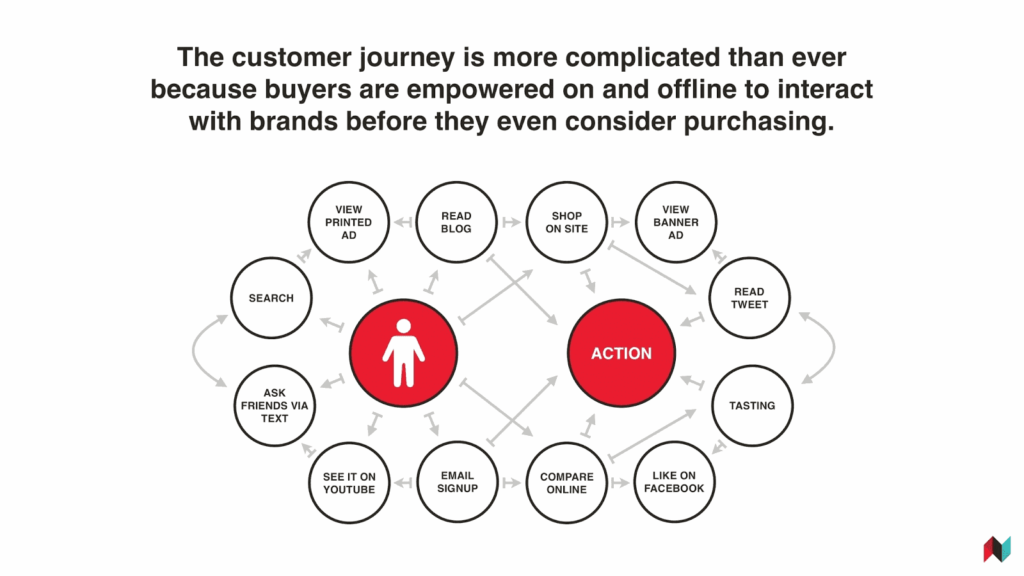
3. A Centralized Data System for Seamless CX
Repeat after us: A deliberate and continuous overlapping of customer’s data across platforms is the need of the hour. Confused?
Here’s an example:
Say your customer has just bought a pair of shoes from your retail store. In the customer feedback book, they make some comments about another favorite pair that seems to be out-of-stock.
Now, any good retailer worth their salt will try to make use of this data and relay it into their online repository saying something like this:
“XYZ customer was looking for product ABC at the Commercial Street store outlet.”
This information ensures that when the stocks are replenished, the brand can reach out to the customer – and possibly even offer a discount to complete the purchase. Most eCommerce brands are making use of the ‘Notify Me‘ feature to ensure customers are not left high-and-dry. The feature looks something like this:

In short, a true omnichannel system would allow this data to be transferred online so that the marketing efforts (throughout the customer’s lifecycle) can make use of real-time, insight-driven information. In addition to this, brands can also take into account the user’s online activity, shopping preferences, and saved items when suggesting items and discounts.
Let’s look at a real-life example to understand this concept better. We’re talking about the UK retailer brand, Oasis:
Their homepage brilliantly showcases a section, “Oasis by You,” where users can get featured by wearing their outfits and tagging their Instagram account. This is one way of getting user-generated content, which builds word-of-mouth and enables greater brand popularity:

In addition to this, the brand integrates data between Instagram and its mobile app to enable a seamless shopping experience:
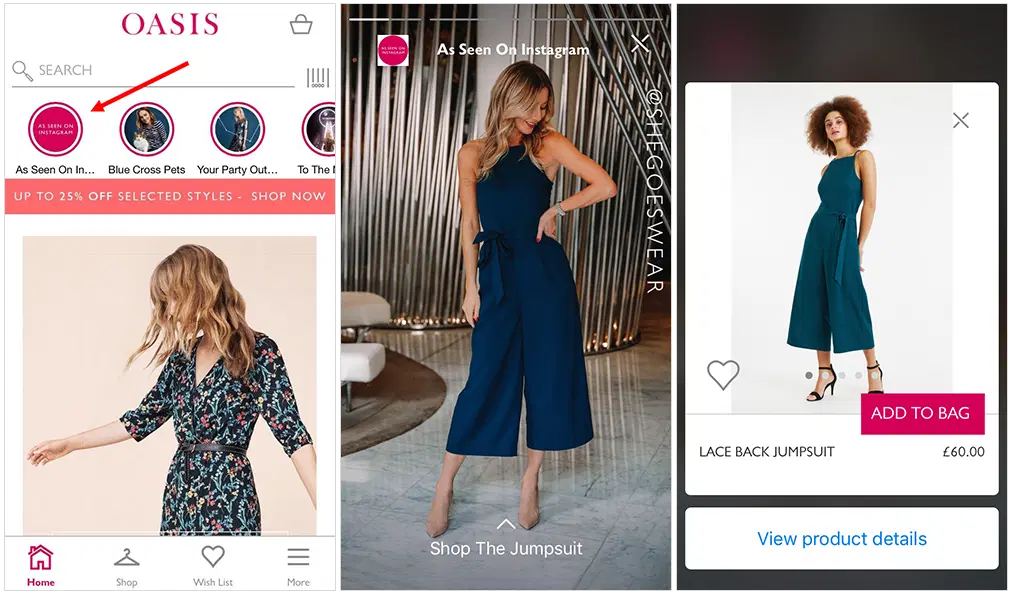
Buyers need to simply click on the “As seen on Instagram” button to get the products added to the website/app automatically:
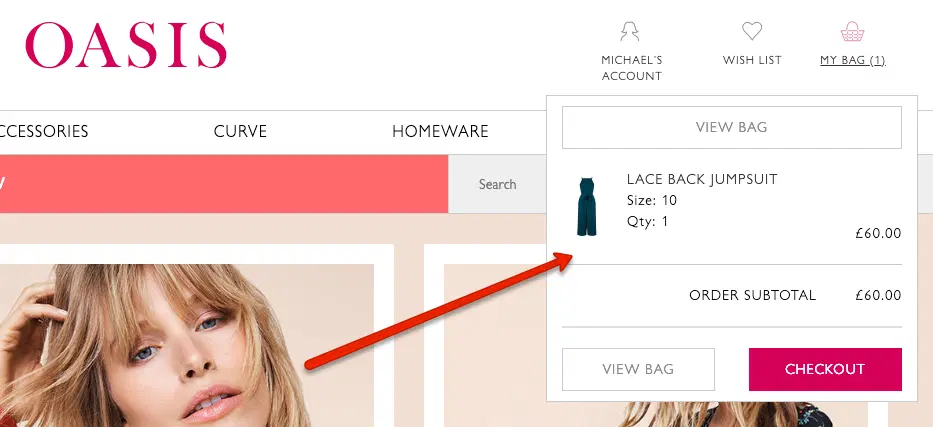
Key insight: There’s no doubt that CX is fast-emerging as a complex phenomenon, but that’s not stopping brands from taking a leap of faith. Research suggests that 51% of companies today are opting for a minimum of eight channels for CX!
4. Mix Content & Context for the Perfect CX Cocktail
When it comes to acing the omnichannel way with the use of contextual and compelling content, many brands are winning. One such example is BarkShop, an eCommerce retailer selling dog-centric products:
Take a look at its super “punny” homepage that hits all the right chords with every dog-lover:
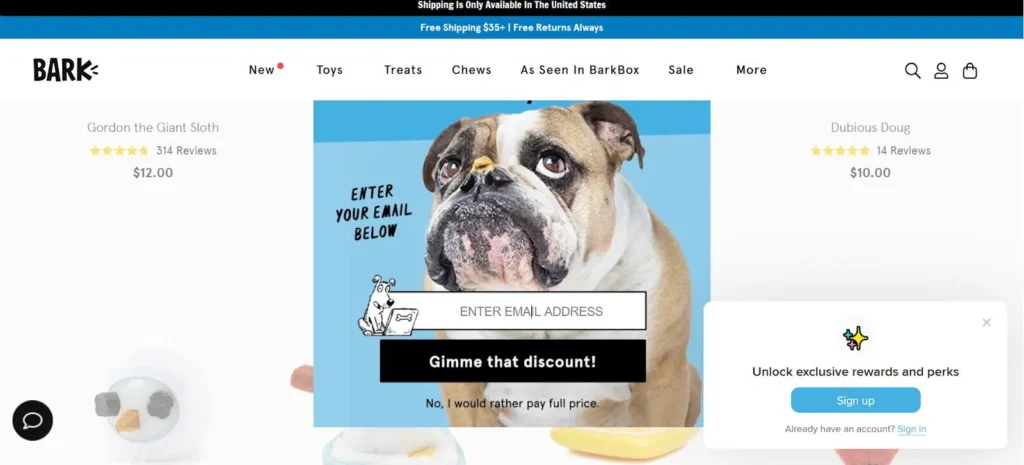
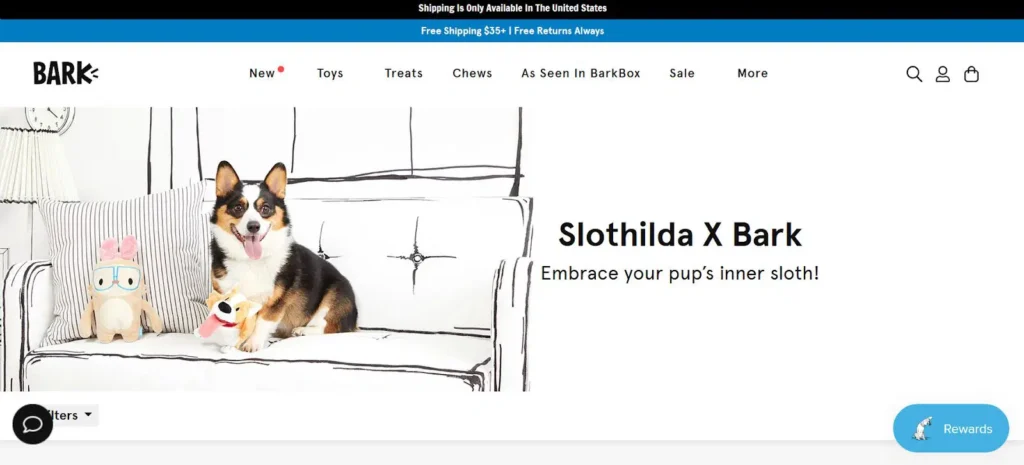
Furthermore, tapping into the core idea: Dog-lovers are dog photo-lovers, their Twitter, Instagram, Facebook, and Pinterest handles are a “treat” for sore eyes:
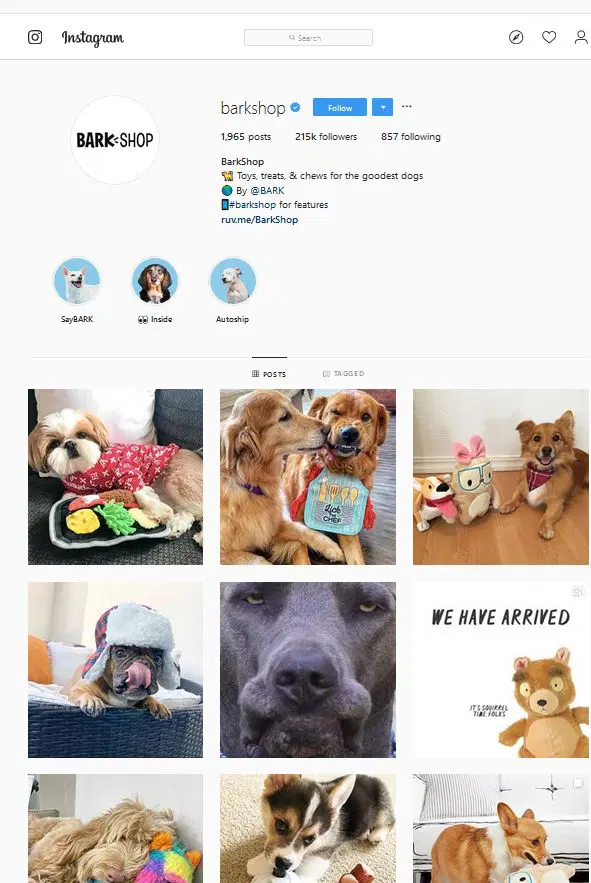
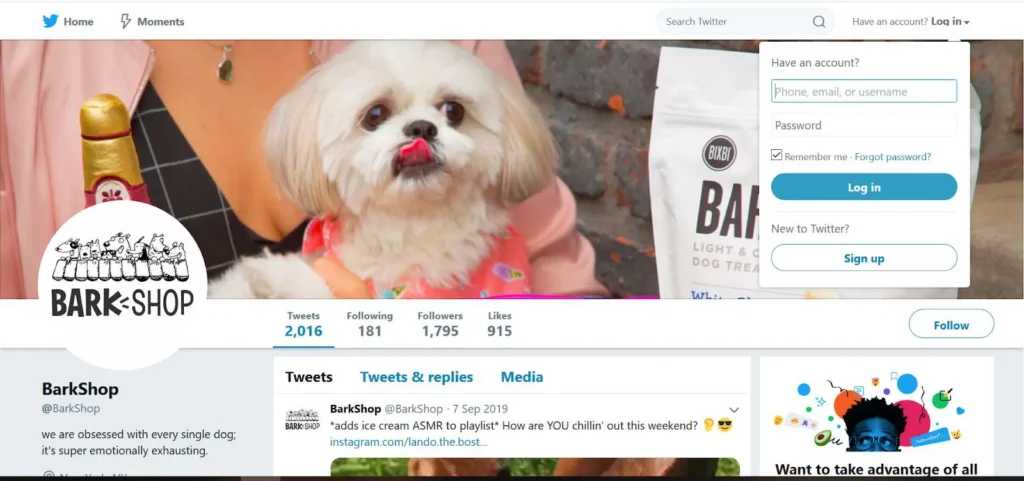
Here are some key pointers to make a note of:
- The content and design across every platform cater to the immediate needs of the users. Both these elements mirror the buyer’s personality and entice the user by selling the “whole package.“
- You’ll notice that every platform has a CTA section (E.g., “Shop” in this case) which is inserted as quick links to the site, thereby allowing users to shop for their favorite dog products and treats in an instant:

- The brand also puts up pop-ups by the name of BarkShop Live from time-to-time, which allows dogs the opportunity to try the products. By extension, it integrates the online-offline experience in a ‘paw’fect manner:

The brand went one step further to explain the entire process the form of a short 1-minute video:
- It sends their curated (and sometimes) themed BarkBoxes to subscribed users:

The results of all these efforts? The brand boasts a whopping 95% retention rate on the BarkBox service.
Key insight: Brands need to focus on creating a compelling online story complemented by on-point content and larger-than-life visuals if they wish to woo their offline audience.
5. Adapt to the Technological Requirements in Real-Time
Imagine this: Your customer is all excited about purchasing the new iPhone on your eCommerce website. They just start browsing when they receive a call from work and have to go in. Excited and unable to wait, they decide to browse the product on the way – only to find a tiny product image that they constantly have to pinch and zoom to get a better look at. Frustrated, they decide to go to your competitor’s website where the images aren’t tiny, and the text isn’t grainy.
The point we’re trying to make is –
If your omnichannel experience isn’t wired according to the technological requirements of the platform/channel, you can bid your customers goodbye. Data claims that around 57% of customers won’t recommend a mobile site to their friend if it is poorly-designed. Further research indicates the following:

Key insight: The best way to attract more customers is to provide a mobile-first design and scale the content based on the platform being used. No more scrolling, shifting, pinching, or zooming – whether it is for your users or potential customers.
6. Personalize. Personalize. Personalize.
When companies connect with the customer’s emotions, the payoff can be huge.” – Harvard Business Review
The math is simple. If you wish to build a loyal customer base, you need to deepen your customer relationship. And one of the best ways to do so is to make it personal (pun intended). These established global brands are going all guns out to humanize touchpoints across channels (think: article, app, tool, or map) and offering a hyper-personalized customer experience – one that engages and entertains:
The MyGlamm mobile app offers a host of useful information such as tutorials, trends, and informative blogs that are integrated with their Instagram account, among other things:

Another excellent example is the mobile app by Sephora, which offers the following user-friendly features:
- Beauty tips and tutorials
- A Beauty Bag account to track purchases
- The ability to scan items while they are in the store
- Keep a wish list
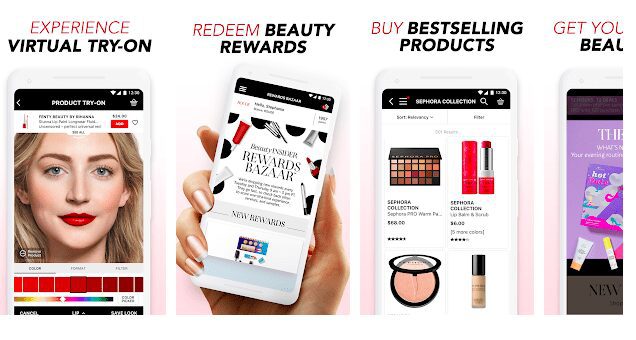
On the other hand, the brand Nike recently put out a heartfelt, customized message for one of its beloved brand ambassadors, Mamba aka Kobe Bryant, which is one way of reeling the readers in and associating with the customers on an intimate level:

Key insight: There is such a thing as brand intimacy which aims to invoke positive emotions in a customer about the brand, thereby boosting sales and greater brand loyalty.
Whatever be the case, there’s no “one-size-fits-all” approach when it comes to something as diverse as omnichannel marketing. It all depends on your brand’s goals, customer’s needs, and overall branding strategy. That said, if there’s anything that you should aim for, let your omnichannel strategy be: engaging, valuable, thoughtful, and consistent. Over to you.
Author’s Bio: Srushti Shah is an ambitious, passionate and out of the box thinking woman having vast exposure in Digital Marketing. She is working as a Digital Marketer and Content writer at Acquire. Her key focus is to serve her clients with the latest innovation in her field leading to fast and effective results. Working beyond expectations and delivering the best possible results is her professional motto. Other than work, she loves traveling, exploring new things and spending quality time with family. Reach out to Srushti Shah on Twitter or LinkedIn


